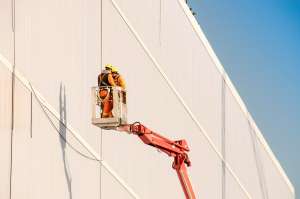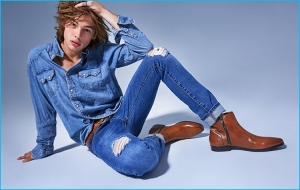Cafe chairs aren't just about aesthetics; the materials they're made from play a crucial role in their durability and comfort. From synthetic rattan to metal, understanding these materials helps cafe owners make informed choices that balance style, longevity, and maintenance. Find what goes into crafting the perfect cafe chair and why it matters for your business.

Understanding Cafe Chair Materials
The materials used in cafe chairs directly impact their durability, comfort, and maintenance requirements. Cafe owners can make better choices by understanding these materials. For instance, exploring options available at cafesolutions.com.au provides valuable insights into selecting chairs that suit both aesthetic and practical needs.
Natural Materials
Natural materials provide an organic look and feel. Examples include wood, rush, reed, rawhide, and splint:
- Wood: Common types include ash, oak, and walnut. Construction often involves traditional methods like hand joinery, using techniques such as lap joints and mortise and tenon joinery for added strength.
- Rush: Created by wrapping rush, heavy paper, strong grasses, or hand-twisted cattails to form a seat, often in four trapezoids meeting at the centre.
- Reed: Used to craft seats and backrests, offering a lighter option.
- Rawhide: Provides a unique, natural aesthetic and is typically used in limited applications.
- Splint: Strips of ash, oak, or hickory are woven to form a sturdy and stylish seat.
Synthetic Materials
Synthetic materials are popular for their durability and low maintenance. Examples include plastic, acrylic, and PVC:
- Plastic: Lightweight and resistant to environmental factors, making it ideal for both indoor and outdoor use.
- Acrylic: Offers a sleek, modern appearance and is durable and easy to clean.
- PVC: Known for its resistance to moisture and environmental wear, often used in outdoor settings.
Understanding these materials helps cafe owners choose chairs that meet their aesthetic and functional needs, enhancing the overall customer experience.
Benefits of Different Cafe Chair Materials
Selecting the right material for cafe chairs can significantly impact their functionality and aesthetic. Each type of material offers unique perks.
Durability and Maintenance
Wood: Wooden chairs, often made from oak or walnut, are durable and can handle heavy use. They are easy to maintain, requiring just a regular wipe-down to keep them clean.
Metal: Metal chairs, like those made from aluminium or steel, are long-lasting and scratch-resistant. They are also easy to clean and maintain, needing minimal upkeep to keep their shine.
Upholstery: Chairs with upholstery, such as leather or fabric, provide added comfort but require regular maintenance. Fabric needs occasional vacuuming, while leather benefits from conditioning to maintain its look and feel.
Comfort and Style
Wood: Wooden chairs offer natural aesthetics and comfort. They can fit into rustic or contemporary cafe designs, making them versatile in style.
Metal: Metal chairs bring a modern, industrial vibe to cafes. Often used in urban settings, they can be paired with cushions for added comfort.
Upholstery: Upholstered chairs, whether in leather or fabric, add a touch of luxury to the cafe environment. They provide superior comfort, making them ideal for settings where customers may sit for extended periods.
Popular Materials Used in Cafe Chairs
Cafe chairs come in several materials that influence their look, durability, and maintenance. Some common materials include wood, metal, and plastic.
Wood
Wooden cafe chairs exude a classic, rustic charm found in many traditional settings. Hardwoods like oak and maple make these chairs exceptionally durable, handling daily wear and tear with ease. Their natural appeal can be enhanced with various finishes, stains, and even carvings, providing a unique touch to each piece. However, wooden chairs require occasional maintenance, such as refinishing or revarnishing, to maintain their appearance.
Metal
Metal cafe chairs are known for their sleek, modern aesthetic. They boast high durability, requiring minimal upkeep while offering robust resistance to wear and tear. Metal's weather-resistant properties make these chairs a preferred choice for both indoor and outdoor seating areas. For example, the Parisian Chair combines metal and polypropylene, providing a stylish and easy-to-maintain option.
Plastic
Plastic cafe chairs offer versatility in design, coming in various colours and styles. They are lightweight, stackable, and easy to clean, making them a practical choice for busy cafes. Plastic's resilience against stains and spills reduces the need for constant cleaning, saving time and effort. Synthetic rattan, a type of plastic, offers weather resistance, ideal for outdoor use like the Rattan Outdoor Chair. Its synthetic makeup also ensures ease of maintenance and prolonged durability.
Eco-Friendly Options for Cafe Chairs
Eco-friendly materials offer sustainable and attractive choices for cafe chairs. These options not only reduce environmental impact but also maintain quality and comfort.
Sustainable Wood
Wood from sustainable sources, such as FSC-certified (Forestry Stewardship Council) forests, provides a green alternative for cafe chairs. Chairs like the traditional wooden bistro, such as the Italia Bistro Chair, are available in various wood colours. Sustainable wood supports responsible forest management by ensuring the wood is harvested in a way that maintains the forest's biodiversity, productivity, and ecological processes. These chairs often feature durable hardwoods like oak and beech, ensuring long-lasting use with a classic appeal.
Recycled Plastics
Recycled plastic chairs, produced from materials like recycled polypropylene, are a popular eco-friendly choice in modern cafes. These chairs support sustainability by repurposing plastic waste into functional furniture instead of contributing to pollution. By using 100% recycled plastics, cafes can reduce their carbon footprint significantly. These chairs are lightweight, durable, and often designed to be stackable, making them easy to store and transport. Additionally, they are resistant to stains and spills, adding to their practicality in a busy cafe environment.
Conclusion
Choosing the right material for cafe chairs is crucial for balancing aesthetics and functionality. Wooden chairs offer timeless charm while metal options provide modern durability. Plastic chairs stand out for their versatility and ease of maintenance, making them perfect for bustling environments. For outdoor settings, synthetic rattan combines weather resistance with durability.
Eco-friendly choices like FSC-certified wood and recycled plastic further improve sustainability efforts. By selecting the appropriate materials, cafe owners can ensure their seating options meet both practical needs and design preferences, creating a welcoming and stylish atmosphere for their patrons.
Frequently Asked Questions
Why are metal chairs preferred in modern cafes?
Metal chairs offer a sleek, modern aesthetic and are known for their exceptional durability and low maintenance, making them ideal for high-traffic areas.
How do plastic chairs benefit busy cafes?
Plastic chairs are lightweight, versatile, and easy to clean, making them perfect for busy environments where easy maintenance and reconfiguration are essential.
Are synthetic rattan chairs suitable for outdoor use?
Yes, synthetic rattan chairs are highly durable and weather-resistant, making them an excellent choice for outdoor cafe settings.
What makes sustainable wood, like FSC-certified oak and beech, a good option for cafe chairs?
Sustainable wood from FSC-certified forests is not only eco-friendly but also durable and aesthetically pleasing, ensuring minimal environmental impact while maintaining quality.
How do recycled plastic chairs contribute to sustainability?
Recycled plastic chairs repurpose plastic waste, reducing carbon footprints. They are lightweight, durable, stackable, and present a sustainable option for modern cafes.






